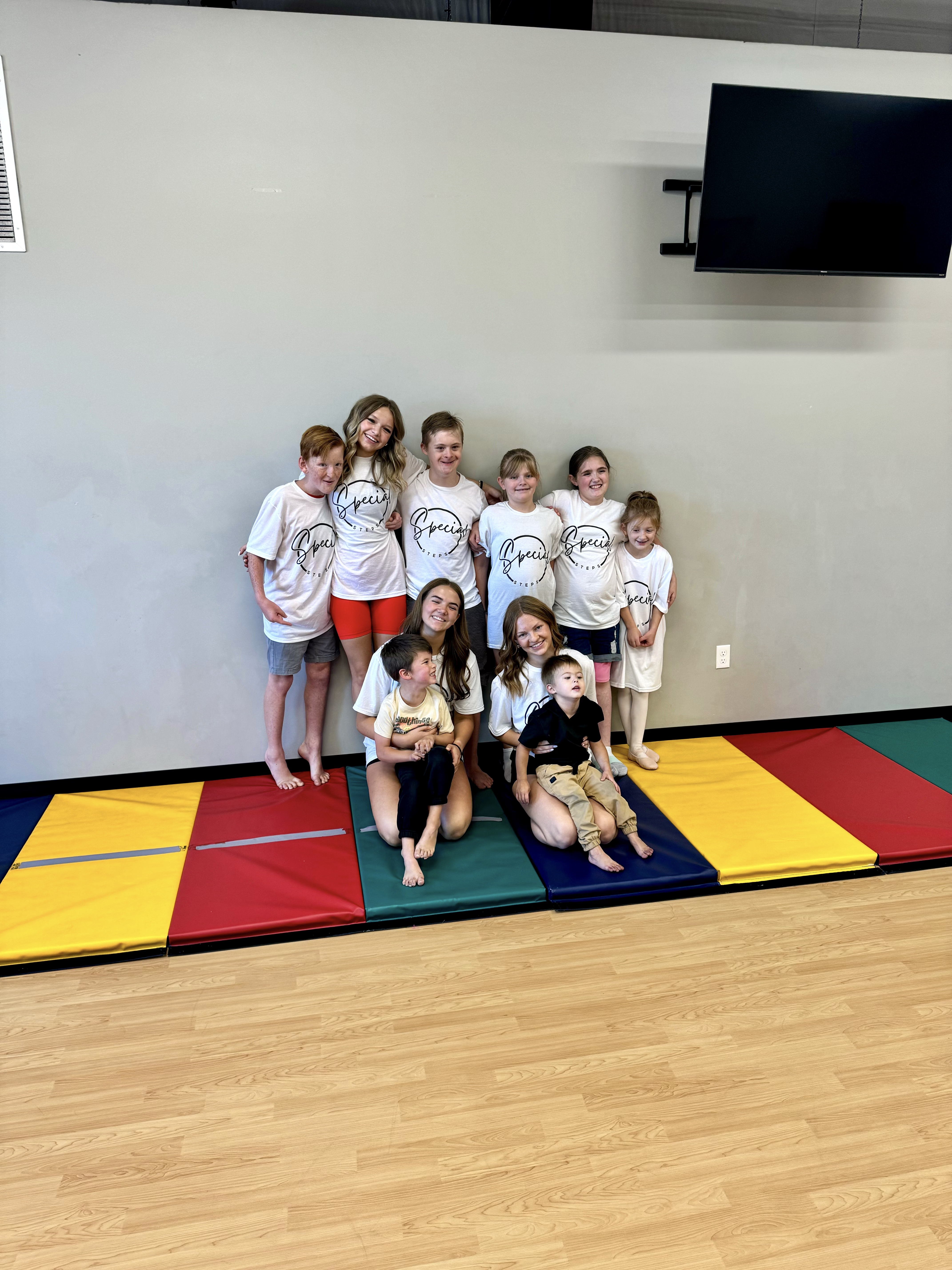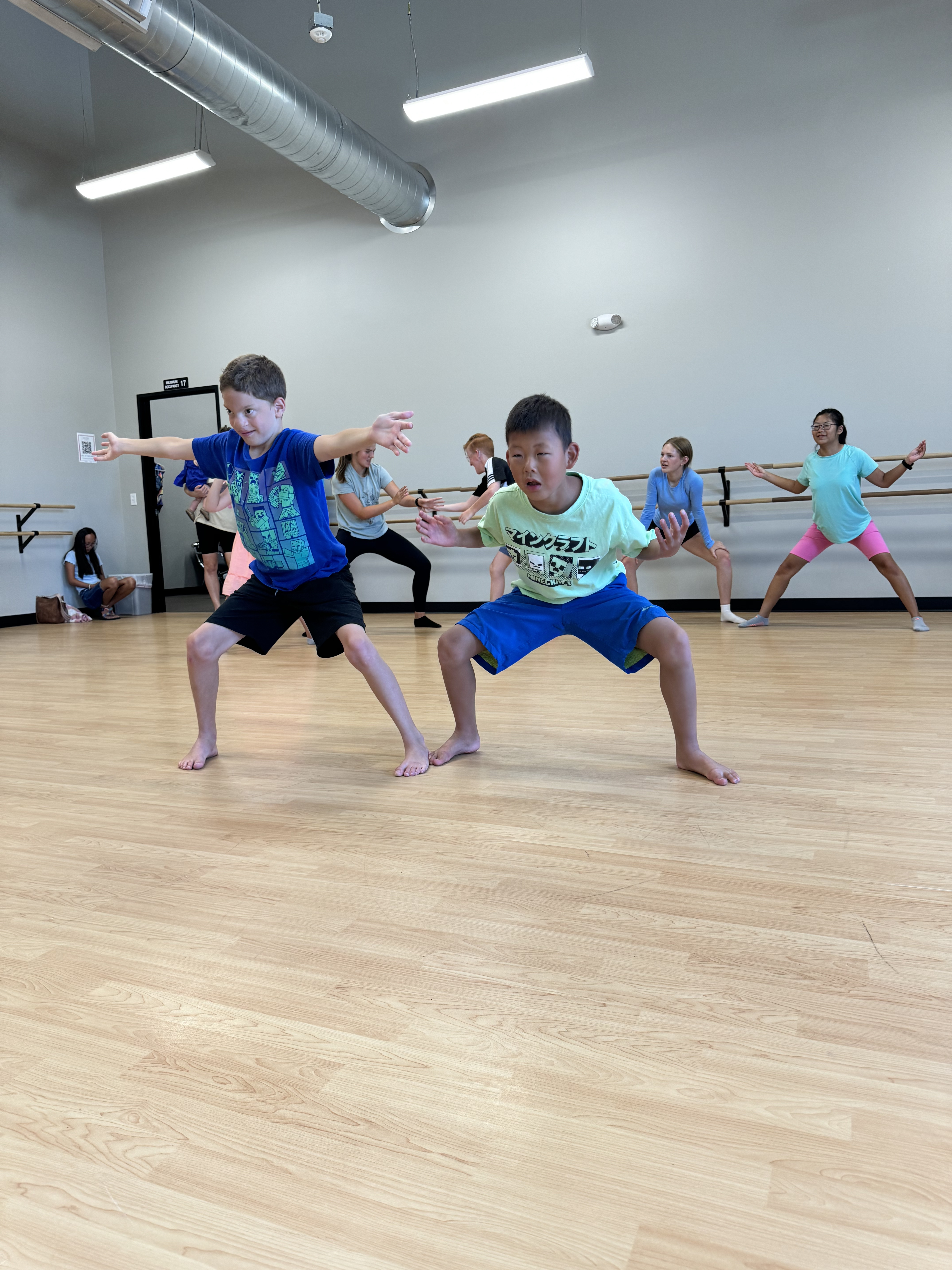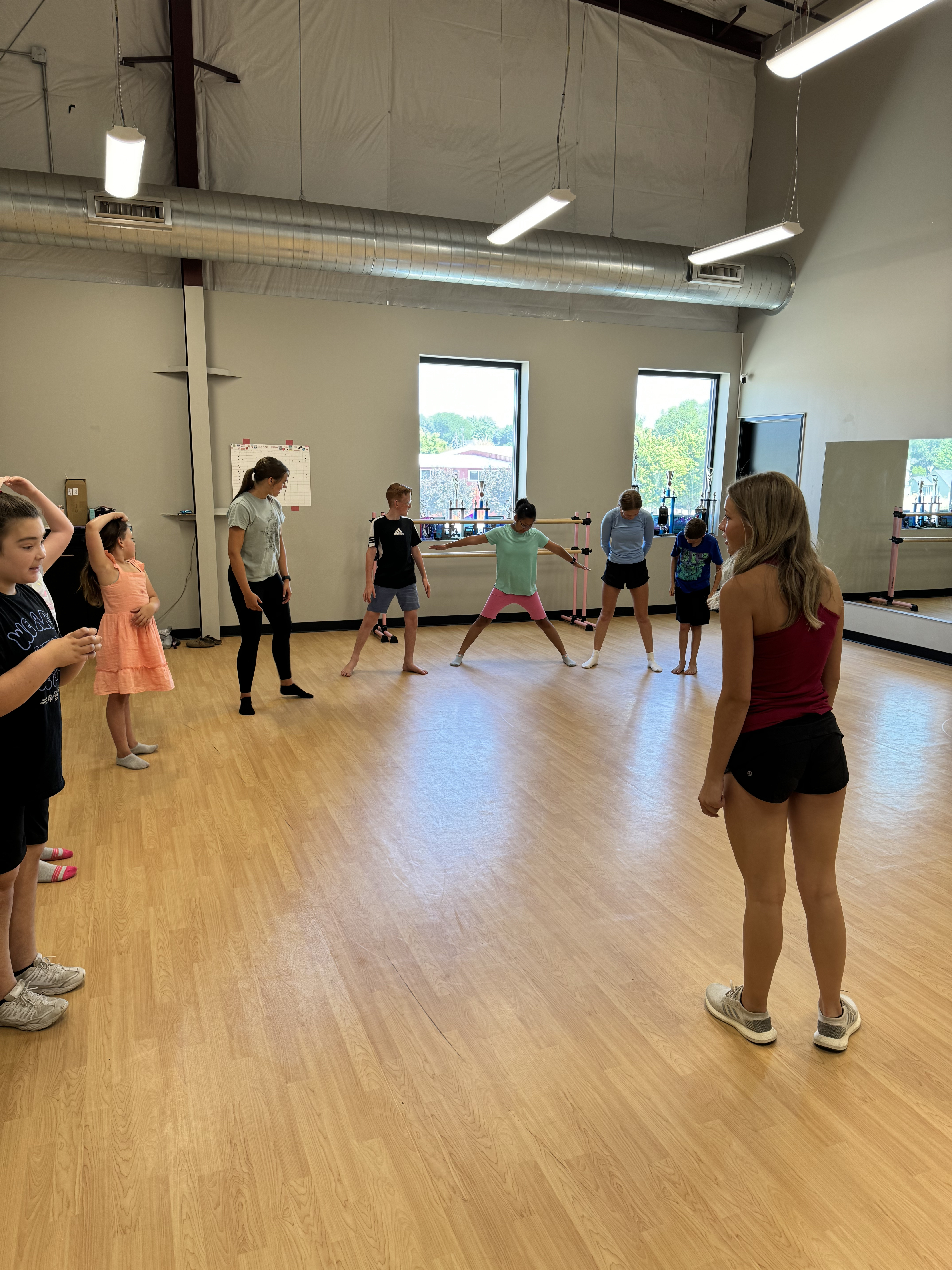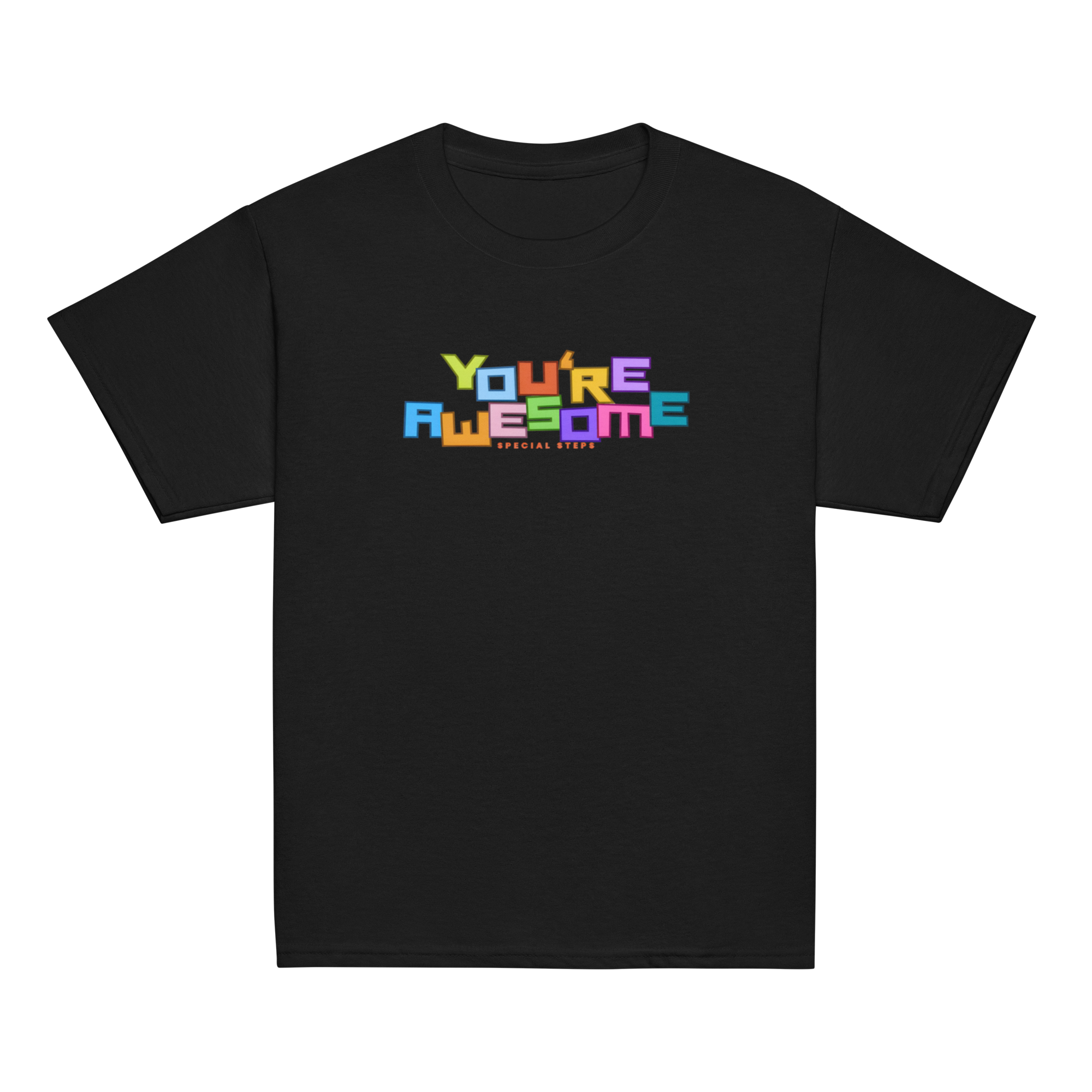
10 Fun Inclusive Dance Activities for Special Needs Kids
10 Fun Inclusive Dance Activities for Special Needs Kids
Dance is a great way for all kids to express themselves, have fun, and develop important skills. At Special Steps, we think every child should get to dance, no matter their abilities. Here are 10 awesome dance activities that work well in special needs classrooms!
1. Rhythm and Movement Warm-Up
Starting with a simple warm-up helps everyone get ready to dance. Kids can clap along to different beats or move different body parts to the rhythm. It's a great way to wake up our bodies and get in the groove!
For example, you could play a game where kids touch their toes when they hear a low drum sound, and reach up high when they hear a bell. This helps with listening skills and body awareness. The best part? Everyone can join in their own way!
Another fun warm-up activity is the "Body Part Dance." Call out different body parts, and kids move just that part to the music. This helps with body awareness and following instructions. You can start simple with "dance with your arms" and get more specific like "wiggle your fingers." This activity is easily adaptable for all abilities.
Check out our dance camps to see how we use fun warm-ups to get kids moving!
2. Mirror Me Dance
This activity is super fun and helps kids connect with each other. Kids pair up and take turns being the "leader" and the "mirror." The leader does simple dance moves, and their partner tries to copy them like a mirror.
It's okay if the moves aren't perfect - the important thing is trying and having fun together! This game helps with coordination and social skills. Plus, it's really cool to see how creative kids can be with their moves!
To make this activity more inclusive, you can have kids mirror facial expressions or hand movements if full-body mirroring is challenging. This adaptation ensures that all children, regardless of mobility, can participate and enjoy the benefits of this social dance activity.

3. Dance Story Time
Who says stories are just for sitting still? In this activity, we combine storytelling with dance. As a teacher or helper reads a story, kids act it out through movement.
For instance, if the story talks about a butterfly, kids can flap their arms like wings. If it mentions a tall tree, they can stretch up high. This activity sparks imagination and helps kids understand stories in a whole new way!
To enhance this activity, consider using visual aids or props that match the story. This can help children who are visual learners or have hearing impairments to better follow along and participate. You can also use simple sign language for key words in the story, making it more inclusive for children with hearing challenges.
Learn more about how we use creative movement in our programs.
4. Scarf and Ribbon Dance
Dancing with props like scarves or ribbons can be really exciting! Kids can swirl them around, wave them high and low, or even use them to make shapes in the air.
This activity is great for kids who might need extra sensory input. The colorful, flowing movements can be really calming and fun. Plus, it helps improve hand-eye coordination and spatial awareness.
For children with limited mobility, you can attach ribbons or scarves to wands or sticks, making them easier to move. This allows all children to enjoy the sensory experience of the flowing fabric. You can also try different textures of fabric to provide varied sensory experiences.
5. Musical Statues with a Twist
Everyone loves a game of musical statues! In this version, when the music stops, instead of just freezing, kids strike a pose based on a theme. It could be animals, shapes, or even emotions.
This game is a blast and helps with listening skills and quick thinking. For kids who find it hard to stay still, they can do a slow-motion freeze instead. The goal is to have fun and move in whatever way feels good!
To make this game more inclusive, you can use visual cues alongside the music stopping. For example, you could turn off a light or raise a colored flag when it's time to freeze. This helps children who may have hearing impairments to participate fully. You can also encourage children to create their own unique poses that work for their bodies, promoting self-expression and body positivity.

6. Circle Dance Party
Circle dances are a great way to build community and have fun together. Kids form a big circle and follow simple dance steps as a group. It could be steps to the side, claps, or even silly moves like pretending to swim!
The best part about circle dances is that everyone can join in their own way. Kids who use wheelchairs can be part of the circle too. It's all about moving together and feeling the joy of dance as a team.
To enhance the inclusivity of circle dances, consider including seated movements that everyone can do, regardless of mobility. For example, you could have everyone do arm movements or upper body swaying. You can also use a parachute or a large circular fabric in the center of the circle for everyone to hold onto, creating a sense of unity and shared movement.

7. Emotion in Motion
Dancing isn't just about moving our bodies - it's also a great way to express feelings! In this activity, kids explore different emotions through dance. You could call out an emotion like "happy" or "excited," and kids show that feeling with their movements.
This helps kids understand and express their emotions in a fun, physical way. It's also a chance to talk about feelings and how they can look different for everyone. Remember, there's no right or wrong way to dance an emotion!
To make this activity more accessible, you can use emotion cards with pictures or symbols representing different feelings. This visual aid can help children who may struggle with verbal cues. You can also encourage children to express emotions through facial expressions or hand gestures if full-body movement is challenging.
8. Seated Dance Party
Who says you need to stand up to dance? Seated dances are super fun and make sure everyone can join in! Kids can move their arms, bob their heads, or wiggle in their seats to the beat.
This is great for kids who might get tired easily or use wheelchairs. You could even have a dance-off where kids show off their best seated moves. It's all about finding joy in movement, no matter how we do it!
To add variety to seated dances, use props like maracas, scarves, or even pool noodles that can be used as "dance partners." You can also create choreographed routines that focus on upper body movements, ensuring that all children can participate fully. Remember to celebrate each child's unique way of moving and expressing themselves through dance.
9. Sound and Movement Orchestra
In this activity, we mix music-making with dance. Kids can use simple instruments like shakers or drums, or even just clap their hands. As they make sounds, they also move to the beat they're creating.
This is super fun for kids who love music and helps develop rhythm skills. It's also great for kids who might be sensitive to loud noises, as they can control the volume of their own instrument.
To make this activity more inclusive, offer a variety of instruments that can be played with different levels of physical ability. For example, wrist bells can be great for children with limited hand mobility. You can also use body percussion, where children create rhythms by tapping different parts of their body, which is accessible to most abilities.
10. Gentle Cool Down
After all that fun dancing, it's important to cool down. Gentle stretches and slow movements help our bodies relax. You could pretend to be a tree swaying in the wind or a cat waking up from a nap.
This is a nice, calm way to end dance time. It helps kids transition to their next activity and leaves everyone feeling good about the fun they had dancing!
For a more inclusive cool-down, include breathing exercises that all children can participate in, regardless of physical ability. You can also use guided imagery, describing a peaceful scene that children can visualize while doing gentle movements or simply sitting quietly. This helps to calm the mind as well as the body.
Find out more about our approach to inclusive dance in our programs.
Wrapping Up Our Dance Party
These 10 activities show that dance is for everyone! Whether you're twirling a scarf, making music with your body, or just bobbing your head to the beat, there's no wrong way to dance. The most important thing is to have fun and express yourself!
At Special Steps, we love seeing kids of all abilities discover the joy of dance. Remember, every move you make is special and awesome, just like you!
We believe that inclusive dance not only promotes physical well-being but also fosters a sense of belonging and community. Through these activities, children learn to appreciate diversity, build friendships, and gain confidence in their unique abilities. Dance becomes a universal language that transcends physical limitations and celebrates the beauty of individual expression.
Dance Gear for Your Little Mover
Want to bring the dance party home? Check out our comfy Special Steps Youth Classic Tee. It's perfect for moving and grooving! Also, if you didn't already know this, you will now. Every purchase you make, goes towards helping Special Steps grow! Together we can make the world a better place, one special step at a time!

Price: $16.50
100% soft cotton (90% cotton, 10% polyester for Sport Grey)
Comfy fit for active kids
Perfect for dance class or everyday wear
Remember, every child can dance in their own special way. Let's keep moving, laughing, and having fun together!